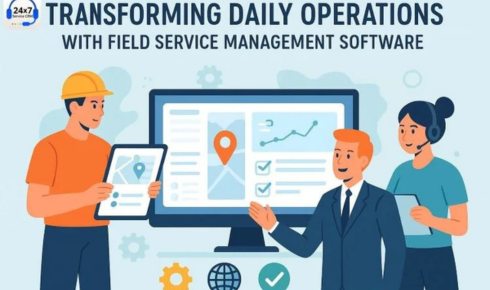
The Benefits of Implementing a Complaint Management System: Streamlining Customer Feedback
In today’s competitive business landscape, customer experience is the key differentiator. Customers expect timely responses, efficient resolution, and personalized attention whenever they encounter an issue. Failure to manage complaints effectively can lead to dissatisfied clients, negative reviews, and loss of business.
This is where a Customer Complaint Management System becomes a strategic asset. By digitizing, automating, and streamlining complaint handling processes, businesses can not only resolve issues faster but also gain valuable insights to improve products, services, and overall customer satisfaction.
Let’s explore the key benefits of implementing a Complaint Management System and how it helps businesses streamline customer feedback effectively.
1. Centralized Tracking of Customer Complaints
In many organizations, complaints are often scattered across multiple channels—emails, phone calls, social media, or in-person interactions. This fragmentation can lead to missed complaints, delayed responses, and inconsistent handling.
A Customer Complaint Management System centralizes all complaints into a single platform, allowing businesses to:
- Track each complaint from submission to resolution.
- Assign complaints to the appropriate team or agent.
- Monitor resolution timelines and follow-ups.
Centralization ensures that no complaint goes unnoticed and that each issue is addressed efficiently, reducing frustration for both customers and employees.
2. Faster Response and Resolution Times
Speed is crucial in customer service. Studies show that the faster a complaint is addressed, the higher the likelihood of retaining the customer.
CCMS platforms often include automated routing and notifications, which help businesses:
- Immediately assign complaints to the relevant department or agent.
- Send acknowledgment emails to customers, confirming receipt of their complaint.
- Track resolution progress in real-time to ensure timely closure.
By automating these processes, companies can significantly reduce response and resolution times, leading to happier customers and improved brand reputation.
3. Enhanced Accuracy and Consistency in Handling Complaints
Manual complaint handling can be error-prone, with details lost or miscommunicated between departments. CCMS software ensures accuracy and consistency by providing:
- A structured workflow for complaint intake, assessment, and resolution.
- Templates and guidelines for communication, ensuring uniform messaging.
- Automated logging of all interactions for future reference.
This level of consistency builds trust with customers, as they receive reliable and professional service every time they submit a complaint.
4. Data-Driven Insights for Continuous Improvement
A Complaint Management System is not just a resolution tool—it’s a valuable source of business intelligence. By analyzing complaint data, companies can identify trends, recurring issues, and areas of improvement.
For example:
- Are certain products generating more complaints than others?
- Which service channels are slower in responding?
- What common customer pain points need attention?
These insights enable organizations to take proactive measures, improve processes, and even innovate products or services based on real customer feedback. This data-driven approach helps transform complaints into opportunities for growth.
5. Increased Customer Satisfaction and Loyalty
When customers feel heard and see their issues resolved promptly, they are more likely to remain loyal. CCMS enhances customer experience by:
- Providing transparency through status updates and notifications.
- Ensuring accountability with assigned responsible personnel.
- Offering quick and efficient resolutions, reducing frustration.
Satisfied customers are not only more likely to return but also to recommend the brand to others. In this way, a Complaint Management System becomes a strategic tool for customer retention and brand advocacy.
6. Compliance and Regulatory Management
For industries like healthcare, finance, and utilities, complaint management is often subject to strict regulatory requirements. Failure to document or respond to complaints can result in fines, legal actions, or reputational damage.
CCMS ensures regulatory compliance by:
- Maintaining detailed logs of all complaints and resolutions.
- Generating reports for audits and internal reviews.
- Enforcing timelines and escalation rules for handling sensitive complaints.
By automating compliance-related processes, businesses reduce risk while demonstrating transparency and accountability to both regulators and customers.
7. Improved Employee Productivity and Accountability
Handling complaints manually can be time-consuming, taking staff away from other critical tasks. CCMS streamlines workflows, automates routine tasks, and allows employees to focus on resolving complex issues rather than tracking down complaint details.
Additionally, the system fosters accountability:
- Each complaint is assigned to a specific agent or team.
- Managers can monitor progress and intervene if necessary.
- Performance metrics help identify training needs and improve service standards.
This structured approach improves employee efficiency while enhancing overall service quality.
8. Multi-Channel Integration for Seamless Feedback Collection
Modern customers expect to lodge complaints through their preferred channels—emails, social media, live chat, or mobile apps. A Complaint Management System integrates these multiple channels into a single interface, ensuring:
- Unified complaint intake from all sources.
- Consistent tracking and response regardless of channel.
- Data consolidation for analysis and reporting.
This omnichannel approach ensures no feedback is lost, enhancing customer convenience and satisfaction.
9. Escalation Management for Critical Complaints
Not all complaints are equal; some require urgent attention. CCMS provides escalation workflows to ensure critical issues are prioritized and resolved swiftly.
Escalation features typically include:
- Automated alerts when complaints exceed a resolution time threshold.
- Tiered escalation to higher management or specialized teams.
- Tracking and reporting to ensure accountability and closure.
By addressing high-priority complaints effectively, organizations minimize negative impact and protect their reputation.
10. Building a Culture of Continuous Improvement
Ultimately, a Complaint Management Software encourages a proactive, improvement-focused culture. Instead of treating complaints as problems to be buried, organizations can leverage them as insights for better decision-making.
By tracking trends, identifying systemic issues, and implementing corrective measures, businesses create a feedback loop that continuously enhances products, services, and customer relationships.
This shift from reactive problem-solving to proactive improvement fosters long-term competitiveness and operational excellence.
Conclusion: Turning Customer Complaints into Business Opportunities
Implementing a Customer Complaint Management System is more than a technological upgrade—it’s a strategic investment in customer satisfaction, operational efficiency, and business growth.
By centralizing complaints, automating workflows, ensuring compliance, and generating actionable insights, CCMS helps organizations resolve issues faster, reduce costs, and build stronger relationships with their customers.
In an era where customer experience defines brand success, a Complaint Management Software Service CRM enables businesses to turn complaints into opportunities, creating loyal customers, improving processes, and sustaining long-term growth.



